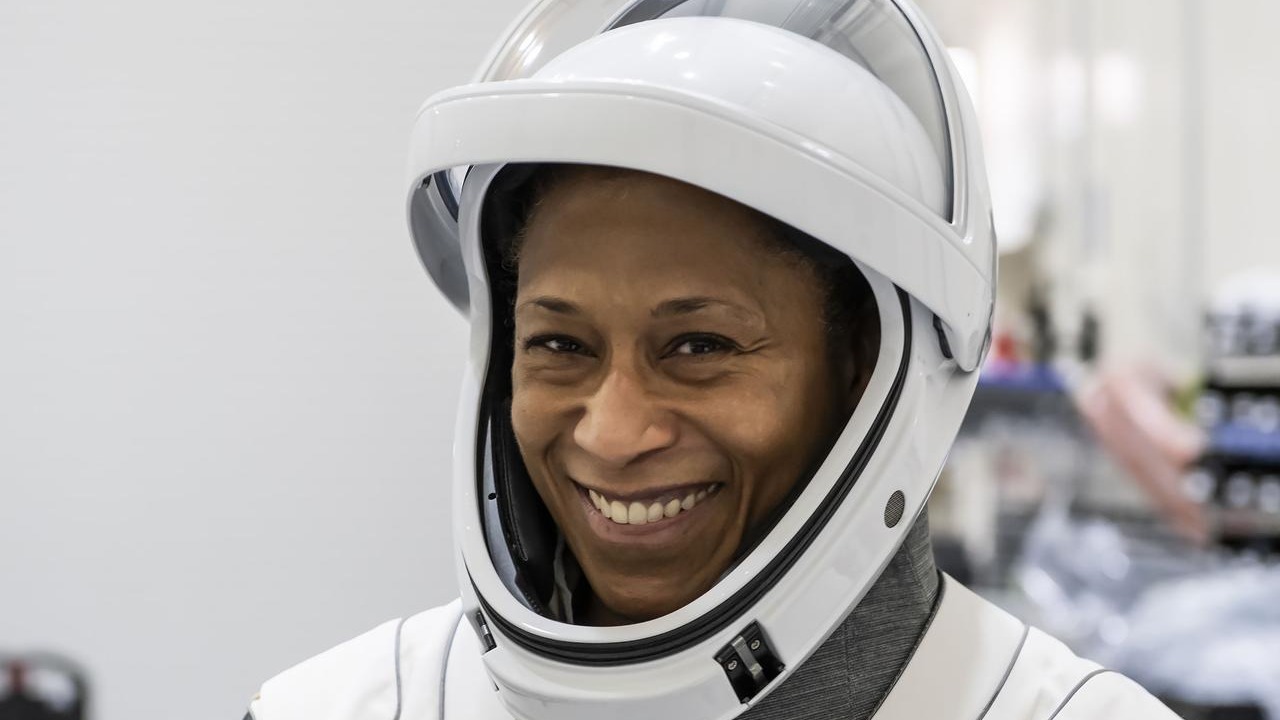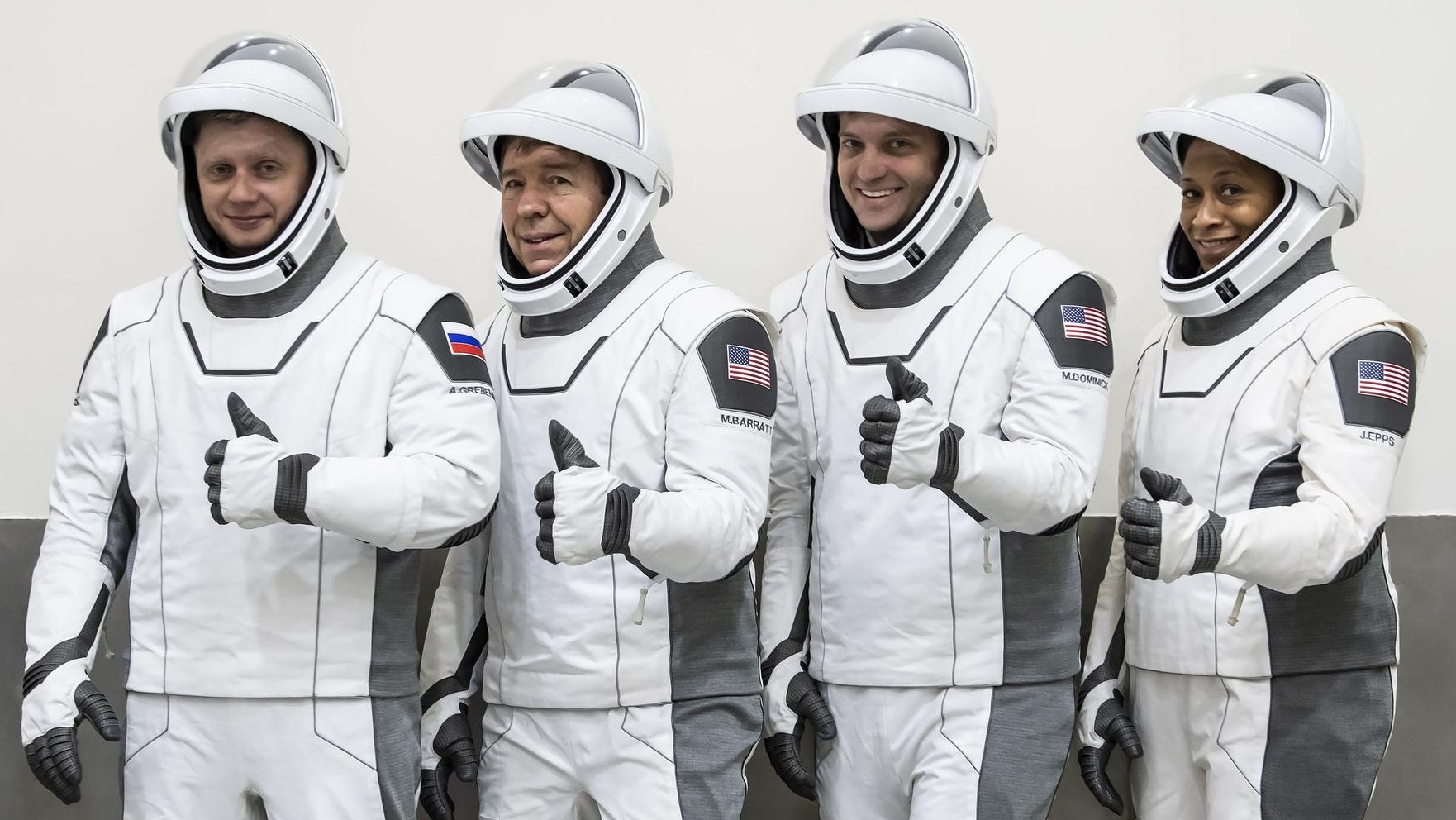
NASA astronaut Jeanette Epps had an unusual path to space: She waited an extra six years to fly.
Epps will finally fly to the International Space Station (ISS) no earlier than Saturday night (March 2) on the SpaceX Crew-8 mission for NASA, performing the second long-duration mission by a Black woman on the orbiting complex. But Epps was supposed to get there as soon as June 2018; that timeline was delayed twice, following reassignments from Russia's Soyuz and Boeing's Starliner spacecraft.
"It has been a number of years, but I was confident that I would fly," Epps, 53, said during a livestreamed Crew-8 press conference held Jan. 25 at NASA's Johnson Space Center in Houston.
Epps noted that she kept her spirits up by focusing on training, which kept her "pretty busy over the last few years." NASA, she said, ultimately moved her to the SpaceX spacecraft to get flight experience sooner and prepare for future missions.
Related: NASA selects astronauts for SpaceX Crew-8 mission to International Space Station
Epps, an engineer by training and former Central Intelligence Agency (CIA) technical intelligence officer, was selected by NASA in July 2009 as an astronaut candidate. Including international astronauts, only Epps and the Canadian Space Agency's (CSA) Jeremy Hansen remain unflown of that selection group, although Hansen is assigned to fly on NASA's Artemis 2 moon mission in 2025.
The CSA only flies astronauts to the ISS about every six years due to its 2.3% contribution to the station, however. As a majority co-partner in the space station, NASA gets frequent seats and flight opportunities for the ISS alongside the other major contributor, Russia. So, in 2017, Epps received a flight assignment for Expeditions 56 and 57, with liftoff scheduled aboard a Soyuz MS-09 in June 2018. This was a normal wait for a NASA astronaut, given the available spacecraft seats at the time.
But in January 2018, NASA announced that Epps would be removed from Soyuz MS-09. Her NASA backup, Serena Auñón-Chancellor, would serve in Epps' place. When asked at the time why the agency made the late-hour switch, NASA spokesperson Brandi Dean told Space.com partner collectSPACE that several factors were considered. "These decisions are personnel matters for which NASA doesn't provide information," Dean added.
Related: NASA astronaut Jeanette Epps speaks about her puzzling removal from space mission

Epps addressed the situation for the first time in an interview on stage at the Tech Open Air festival in Berlin in June 2018. "There's no time to really be concerned about sexism and racism and things like that, because we have to perform," Epps said of some of the rumors behind the decision. "And if it comes into play, then you're hindering the mission, and you're hindering the performance. And so whether or not it is a factor, I can't speculate what people are thinking and doing unless I have a little bit more information."
Epps added that many of her Russian colleagues expressed safety concerns with her being removed from the Soyuz crew just months before launch, given they were training for about two years prior to the reassignment. "I don't know where the decision came from and how it was made, in detail or at what level," Epps noted.
NASA next assigned Epps to Starliner in August 2020 for what would have been the spaceship's first operational mission to the ISS. Starliner, however, has been delayed by numerous technical issues, and its crewed debut, a test mission to the ISS, isn't expected to fly until April this year. Epps was then reassigned by NASA to SpaceX Crew-8, the eighth operational astronaut mission to the ISS by SpaceX, in August 2023.
When Epps reaches space, she will be at least the 19th Black astronaut to have gone there, according to NASA statistics from February 2023. That's out of more than 600 individuals who have flown to space worldwide. (The number of people in space may vary according to the criteria employed, however; in August 2023, for example, Virgin Galactic launched two Black individuals to suborbital space, a little below the Kármán line that international authorities define as the boundary of space.)
Black NASA astronauts such as Charlie Bolden, who is also a former NASA administrator, have spoken out about the institutional racism in the U.S. that did not allow Black astronauts to reach orbit until decades later than their white peers. There was also little attention paid to NASA's Black technicians on the ground who played key roles in early human spaceflights, like the "Hidden Figures."
The first Black astronaut assigned to a spaceflight was Robert H. Lawrence, according to NASA; Lawrence died in an aircraft accident in 1967 before the U.S. military's planned Manned Orbiting Laboratory (MOL) space station could get off the ground. MOL ultimately never flew. U.S. Black test pilot Ed Dwight participated in military space-related activities in the 1960s but for complex reasons (outlined in a 2020 Smithsonian Magazine article) never made it to space.
The first Black astronaut in orbit was Arnaldo Tamayo Méndez, who visited the Soviet Salyut-6 space station in 1980, NASA stated.
NASA recruited its first Black and female astronauts in 1978. NASA's first flown Black astronaut was Guion S. Bluford in 1983 aboard space shuttle mission STS-8, while the first flown Black female at NASA was Mae Jemison in 1992 on STS-47. Among other milestones: Bernard Harris was the first to spacewalk in 1995 on STS-55, Victor Glover was the first Black long-duration astronaut in 2020-21 during ISS Expeditions 64 and 65, and Jessica Watkins was the first Black female long-duration flyer in 2022 for Expeditions 67 and 68.







